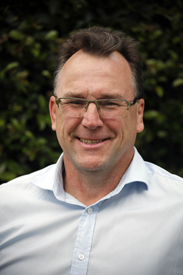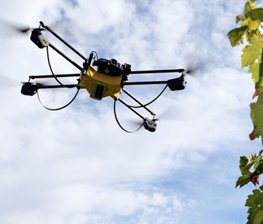Weekly column from Council Courier e-newsletter by CEO Greg Hallam, Friday 15 April 2016.
“It's not where you live, it’s how you live” is a mantra you will hear a lot from the LGAQ over the next four years in relation to the use of so-called smart technology.
Later this month, the LGAQ’s Innovation Executive Lou Boyle (pictured) will lead a delegation of remote councils – Diamantina, Barcoo and Burke shires – on a fact-finding mission to Sydney to visit the Australian head offices of Telstra and Microsoft and meet NBN representatives.

At the LGAQ, we will be purposefully avoiding the Smart Cities tag, instead going with Smart Services and Infrastructure because in truth, technology has no boundaries.
It’s just as applicable in the bush and indigenous communities as it is in the big smoke.
There are no excuses for not getting involved. Plenty of councils are.
For example, Cherbourg Aboriginal Shire Council is integrating smart street lighting and CCTV to improve community safety, while other rural councils have embraced the concept of connected fleets to improve productivity and service levels.
The LGAQ, more specifically LGIS, has been pioneering the use of drones to cut costs and improve efficiency. Examples include bridge inspections; quantity surveying of quarries, borrow pits and rubbish dumps (at greatly reduced costs and time); pest and weed work; road inspections – you name it.

Councils are only limited by their imagination in how they can make use of new technology.
Many are hamstrung by their own perceptions. For instance, the rollout of the National Broadband Network has created the perception that quality telecommunications infrastructure will only be available once the “NBN comes to town” or they can access “fibre”.
Most mobile phone carriers provide 4G or at least 3G speeds to 99 per cent of the population, a comparative rate to Estonia, which is recognised as one of the world’s most digitally connected countries.
With the exception of remote communities on Cape York and in the Torres Strait, Queensland councils can access core networks, including the Government Wideband IP Services (GWIP).
In many ways, the network technology is already in place for councils be creative and develop smart strategies.
Prime Minister Malcolm Turnbull doesn't go a day without mentioning new technology, smart “this and that” and “it's the most exciting time to be living in Australia”, although most of the talk is about cities.
He isn't wrong though and here at the LGAQ we won't forget the bush in what will be a technology revolution that will apply for all of the next four years.
Because of the sheer significance of the smart technology revolution to our sphere of government, the LGAQ has engaged another senior former Telstra executive to offside to Lou Boyle for the balance of this year.

That will enable Lou to spend more time on the road talking to councils across the state in what will effectively be a smart technologies roadshow.
The Telstra Local Buy Industry Development Fund (IDF) is helping councils invest in new technologies by subsidising projects, in return for the opportunity to share learnings.
So if your council is interested in what's possible in your patch then give Lou a call and book in a visit to learn more first-hand.